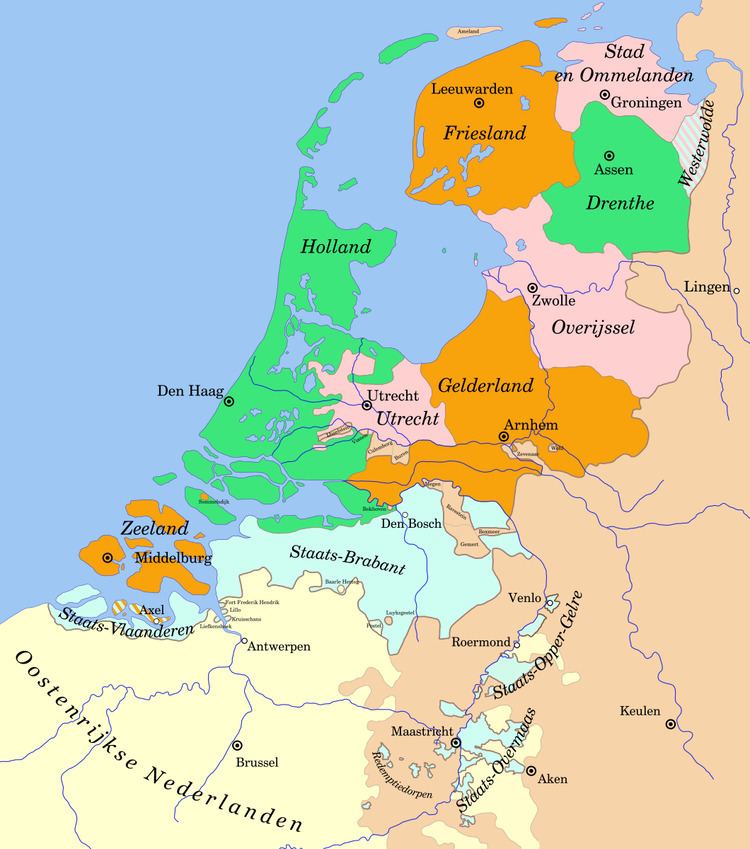 | ||
The Generality Lands, Lands of the Generality or Common Lands (Dutch: Generaliteitslanden) were about one fifth of the territories of the United Provinces of the Netherlands, that were directly governed by the States-General. Unlike the seven provinces Holland, Zeeland, Utrecht, Guelders, Overijssel, Friesland and Groningen, these territories had no States-Provincial and were not represented in the central government.
Contents
Generality lands
History
During the Eighty Years' War the Generality Lands came under control of the Dutch Republic, and this situation was consolidated by the Treaty of Westphalia in 1648. Most of the territories had no provincial government because they were cut off from their original governments, which remained under Spanish rule. The prefix Staats- indicates that this part of the province was under general States rule, as a dependent territory. For both the Generality Lands and the Dutch colonies, sovereignty was claimed by the Generality on the basis Right of conquest.
After the French occupation of the Southern Netherlands and the proclamation of the Batavian Republic in 1795 the Generality Lands ceased to exist. Staats-Brabant became a département in the Batavian Republic (Bataafs-Brabant). Staats-Vlaanderen became part of the French département Escaut. Staats-Overmaas and Staats-Opper-Gelre became parts of the Frenchs départements Roer and Meuse-Inférieure.
When French rule ended and the United Kingdom of the Netherlands began, none of the Generality lands returned. Bataafs-Brabant was merged with a number of formerly semi-independent Holy Roman fiefs and part of the province of Holland to become the province of Noord-Brabant; Staats-Vlaanderen was incorporated into the province of Zeeland; and most parts of Staats-Opper-Gelre and Staats-Overmaas were merged with territories gained from Prussia to form the province of Limburg, with the rest going to Prussia.
Territories of the Dutch Republic outside Europe were also under general States rule, for example Staten Island in present-day New York City. New Zealand was also originally called Staten Landt after its Dutch discovery.
